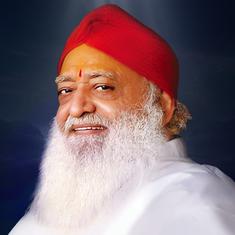That’s not very different from Manmohan Singh, who spent 47 of 365 days in 12 countries during the first year of the second term of the United Progressive Alliance, or UPA-II (and 30 days during UPA-I).
Modi promised a strong foreign policy to the people of India after he took oath on May 26, 2014. The swearing-in ceremony was attended by leaders from eight neighbouring nations.
Here’s the most striking difference between the two PMs: Modi has made more state visits – official visits to countries – compared to summit-oriented visits by Singh.

Source: Ministry of External Affairs Annual reports: 2004-05, 2009-10, 2014-15
Modi has been criticised for his foreign visits and days spent out of the country. But Singh was nearly as well travelled as Modi, in terms of days abroad.
Modi intends to use public diplomacy to project India’s soft power, as IndiaSpend reported earlier.
In terms of visits by heads of states to India, Modi’s first year saw 23 visits compared to 30 and 29 visits during Dr. Singh’s first year of his first and second terms respectively.

Note: Definitions of the terms used can be found here. Source: Ministry of External Affairs Annual reports: 2004-05, 2009-10, 2014-15
A total of 57 bilateral treaties/conventions/agreements were signed during Modi’s first year (May 26, 2014 to December 31, 2014), compared to 37 and 22 bilateral treaties during Dr. Singh’s first year of UPA-II (May 22, 2009 to December 31, 2009) and UPA-I (May 22, 2004 to December 31, 2004), respectively.

Note: Figures for Foreign Aid in US $ million and rest all figures in US $ billion, unless otherwise mentioned; Sources: In the following list, 1 stands for 2003-04, 2 for 2004-05, 3 for 2008-09, 4 for 2009-10, 5 for 2013-14 and 6 for 2014-15. Foreign Aid: 1,2,3,4,5,6; Foreign Direct Investment: 1 to 6, Figures for FDI 2014-15 are up to February 2015; Foreign Exchange Reserves: 1,2,3,4,5,6; Exports and Imports: 1 to 4, 5 & 6
India’s foreign aid to other countries during Modi’s first year increased 16%. This was down by 11% during Singh’s first year of his second term, against an increase of 29% during the fist year of his first term.
Foreign direct investment registered a growth of 19% in 2014-15 over 2013-14. During Singh’s first year of his first term, FDI saw an increase of 47% but declined 18% during his first year of second term.
Foreign exchange reserves in 2014-15 registered a growth of 12% over its previous year. The same saw an increase of 5% and 26%, respectively, during Singh’s first year of his two terms.
In terms of dollars, exports and imports declined 2% and 0.5%, respectively, in 2014-15 from 2013-14. In Singh’s first year of his second term, exports and imports declined far more sharply, 4% and 5%, respectively.
The National Democratic Alliance government, under Modi, has restored some purpose and direction to India’s foreign policy, missing during the UPA’s second term, according to Dr Uttara Sahasrabuddhe, professor for International Politics, University of Mumbai.
The breakthrough in the Indo-US nuclear deal during Dr. Singh’s first term was the chief highlight of his foreign policy. During his second term, foreign policy lacked direction, Sahasrabuddhe said, as his leadership was not accepted within the party and was largely driven by the bureaucracy, unlike Modi, who exerts greater control over foreign policy.
This article was originally published on IndiaSpend.com, a data-driven and public-interest journalism non-profit.










